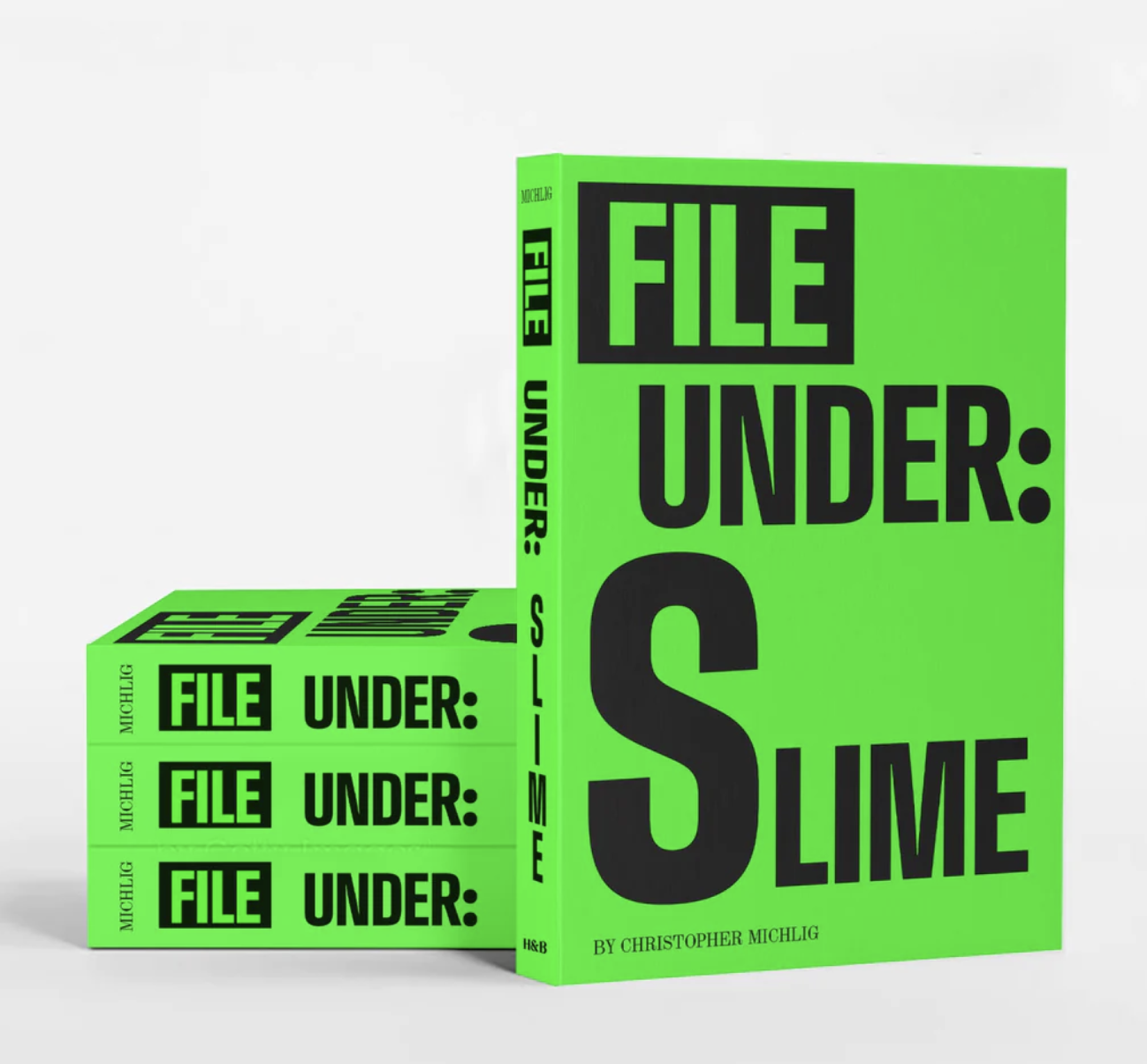File Under: Slime
Christopher Michlig
What is slime? We are well acquainted with its qualities in conjunction with certain things from which we tend to recoil but to which we are also at times fervently attracted. Despite being everywhere, slime is a surprisingly unexamined cultural phenomenon. File Under: Slime collates a cultural history of “slime” and “sliminess,” with particular emphasis on precedents in pop-culture, contemporary art, ecology, science fiction, literature, critical theory, and cinema.
Artist and professor Christopher Michlig’s research characterizes slime as a pervasive, oozing, cultural phenomenon, documenting instances of its evolving representations, ranging from philosopher Jean Paul Sartre’s meditation on the aberrant substance in his 1943 work Being and Nothingness, to the cooptation of it as a ubiquitous visual and cinematic trope referencing the grotesque, transgressive, and paranormal.
The appearance of slime in such films as The Blob, Ghostbusters, and Poltergeist are diligently and humorously analyzed, commercial and graphic design precedents are incorporated, and the work of such artists as Lynda Benglis, Cindy Sherman, Robert Smithson, Sterling Ruby, and Jason Rhoades are connected within a broad mesh of corollary examples emphasizing the dynamic and elastic visual signification of slime.
Alongside a multitude of visual references, File Under: Slime is supplemented with literary and theoretical references from such writers as Jean Paul Sartre, Julia Kristeva, Mike Kelley, Rosalind Krauss, Laura Mulvey, Georges Bataille, and others. Michlig’s analysis ultimately tracks slime as a recurring cultural topos. There is a pointedly philosophical side to his project in that it orbits intently around that which is most aporetic. If slime can be readily deployed as a foil for thinking about thinking, which would have to be the ultimate aim of philosophy, it is entirely due to its objective-empirical faults. In other words, slime does not suggest itself as something to be thought about, but rather thought on.
By Christopher Michlig
Designed by Brian Roettinger
Foreword by Jan Tumlir

